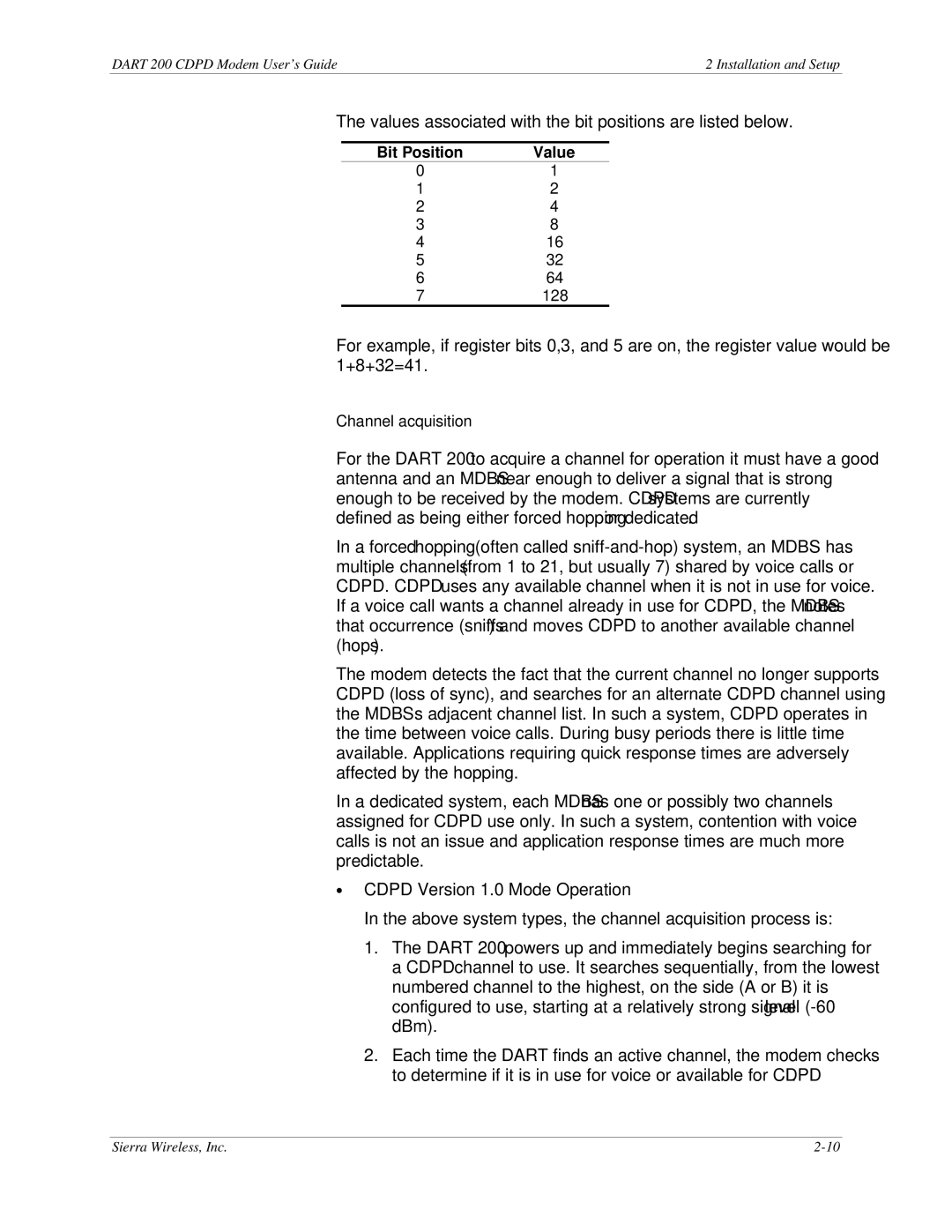
DART 200 CDPD Modem User’s Guide | 2 Installation and Setup |
The values associated with the bit positions are listed below.
Bit Position | Value |
0 | 1 |
1 | 2 |
2 | 4 |
3 | 8 |
4 | 16 |
5 | 32 |
6 | 64 |
7 | 128 |
For example, if register bits 0,3, and 5 are on, the register value would be 1+8+32=41.
Channel acquisition
For the DART 200 to acquire a channel for operation it must have a good antenna and an MDBS near enough to deliver a signal that is strong enough to be received by the modem. CDPD systems are currently defined as being either forced hopping or dedicated.
In a forced hopping (often called
The modem detects the fact that the current channel no longer supports CDPD (loss of sync), and searches for an alternate CDPD channel using the MDBS’s adjacent channel list. In such a system, CDPD operates in the time between voice calls. During busy periods there is little time available. Applications requiring quick response times are adversely affected by the hopping.
In a dedicated system, each MDBS has one or possibly two channels assigned for CDPD use only. In such a system, contention with voice calls is not an issue and application response times are much more predictable.
∙CDPD Version 1.0 Mode Operation
In the above system types, the channel acquisition process is:
1.The DART 200 powers up and immediately begins searching for a CDPD channel to use. It searches sequentially, from the lowest numbered channel to the highest, on the side (A or B) it is configured to use, starting at a relatively strong signal level
2.Each time the DART finds an active channel, the modem checks to determine if it is in use for voice or available for CDPD.
Sierra Wireless, Inc. |
